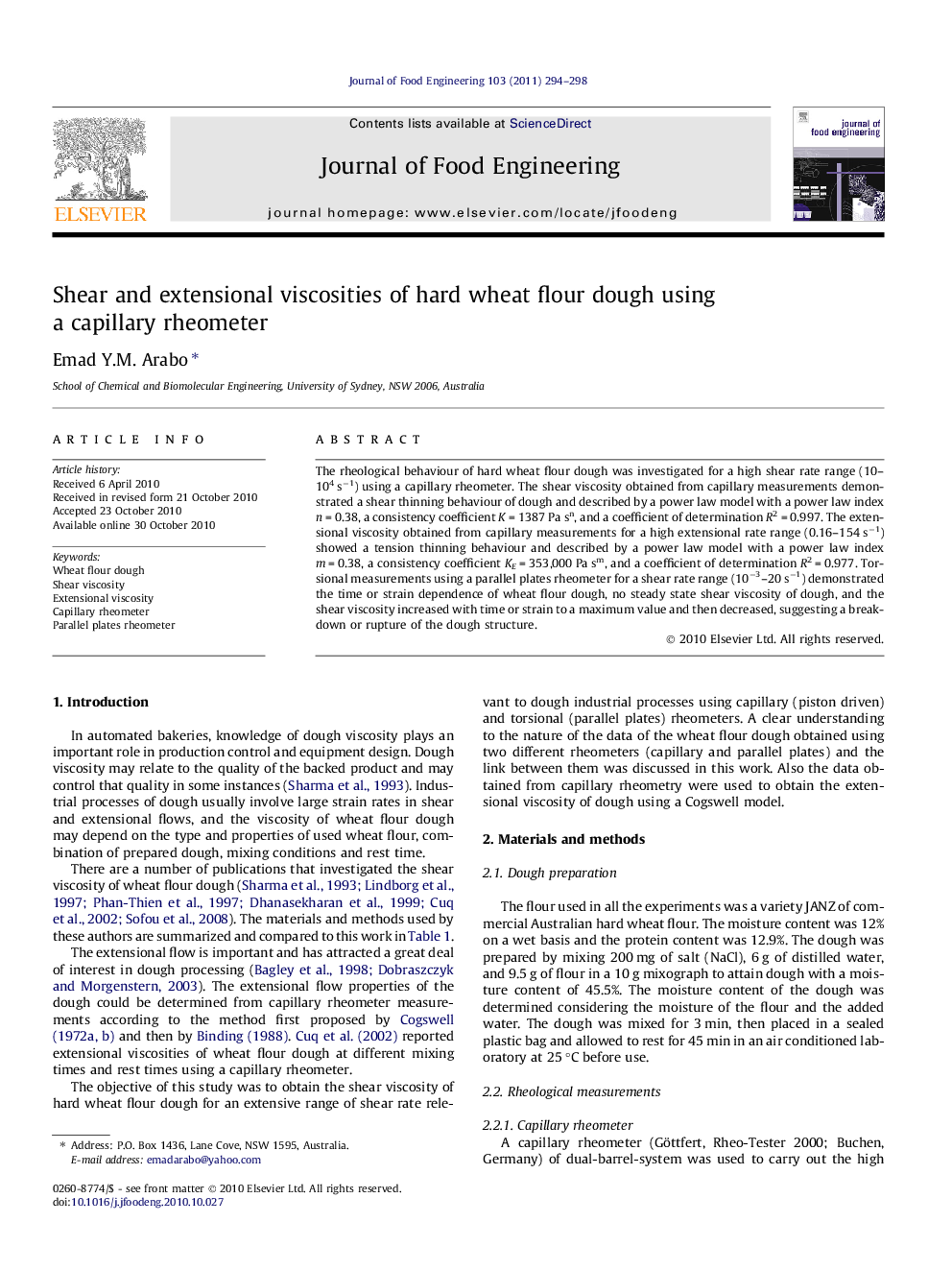| Article ID | Journal | Published Year | Pages | File Type |
|---|---|---|---|---|
| 224040 | Journal of Food Engineering | 2011 | 5 Pages |
The rheological behaviour of hard wheat flour dough was investigated for a high shear rate range (10–104 s−1) using a capillary rheometer. The shear viscosity obtained from capillary measurements demonstrated a shear thinning behaviour of dough and described by a power law model with a power law index n = 0.38, a consistency coefficient K = 1387 Pa sn, and a coefficient of determination R2 = 0.997. The extensional viscosity obtained from capillary measurements for a high extensional rate range (0.16–154 s−1) showed a tension thinning behaviour and described by a power law model with a power law index m = 0.38, a consistency coefficient KE = 353,000 Pa sm, and a coefficient of determination R2 = 0.977. Torsional measurements using a parallel plates rheometer for a shear rate range (10−3–20 s−1) demonstrated the time or strain dependence of wheat flour dough, no steady state shear viscosity of dough, and the shear viscosity increased with time or strain to a maximum value and then decreased, suggesting a breakdown or rupture of the dough structure.
